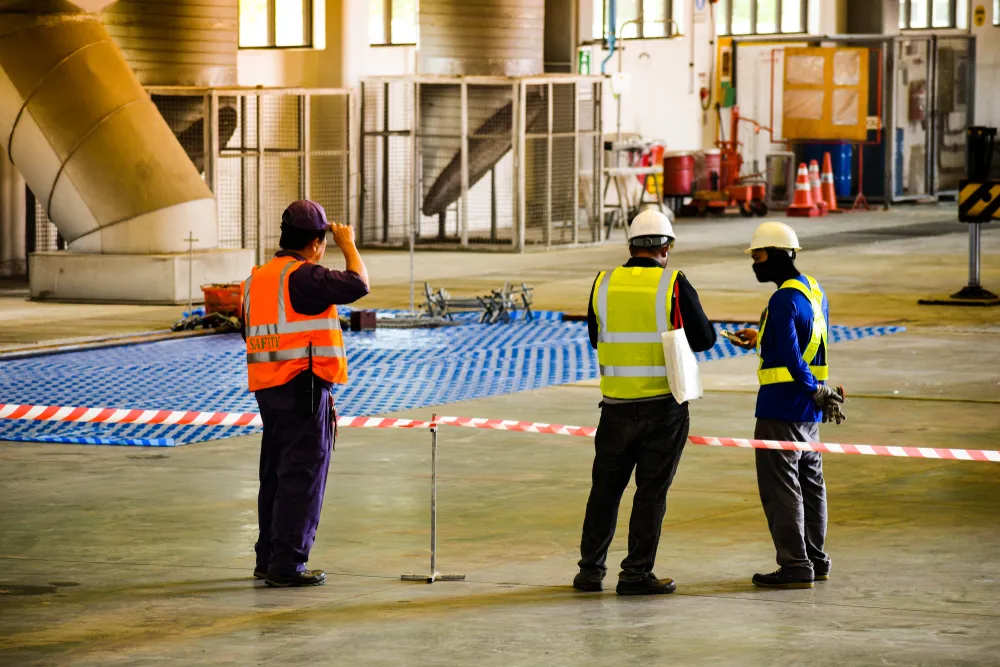Steps to Manage Regulatory Compliance in Hazardous Areas
Steps to Manage Regulatory Compliance in Hazardous Areas
Apr 25, 2023

Under WA Health and Safety at Work Act 2020, plant owners and employers have a responsibility to ensure the safety of their workers and provide safe working premises i.e.
- Hazardous areas are correctly identified and documented as per AS/NZS 60079.10;
- Electrical Equipment in Hazardous Areas (EEHA) is correctly installed, tested, inspected and maintained to IEC/AS/NZS 60079.14 and 17; and
- Persons employed to action in hazardous area work are competent.
If you are a person responsible for safety of electrical equipment in Hazardous Area (EEHA) at your site, here are the steps to ensure safety and achieve regulatory compliance:
1. Hazardous Area Classification (HAC):
Hazardous areas are classified to enable the proper selection of equipment, assemblies, systems and installations for safe operation in explosive atmospheres.
The first step is for a competent person to complete a HAC study to identify where explosive atmospheres are likely to occur continuously, in normal operation, or in expected abnormal operation.
HAC is required for any site that stores, handles, produces, or otherwise processes flammable gases, flammable liquids, or combustible dusts.
HAC report may recommend some steps to declassify parts of site. This is a perfectly valid outcome from a properly done HAC study. PMV aims to look for practical steps our clients can take to reduce or eliminate their hazardous areas.
HAC report details the classification methodology and justification for the zones, and it extend, which are marked on the site layout plan and elevation the zones.
2. Selection, erection, and inspection of Electrical Equipment in Hazardous Area (EEHA) :
Any electrical equipment to be installed in the classified HA, shall be certified Zone or EPL, Equipment Group, and Temperature Class set out in the HAC.
The equipment selection and installation design need to be completed by a designer competent to work on hazardous area installations.
The equipment needs to be installed by an installer competent to work with Ex equipment.
Before putting Ex equipment into service, an initial inspection at a detailed grade needs to be completed according to AS/NZS 60079.14 by a competent inspector.
Requirements for competency can be found in AS/NZS 60079.14. There is no requirement in AS/NZS 60079.14 for independence among the designer/ installer/ inspector and they can all be the same person.
3. Verification Dossier:
AS/NZS 60079.14:2017 Clause 4.2 stipulates the requirements for documents confirming the compliance of electrical equipment and installations.
It is a requirement that all sites comply and maintain a dossier containing all information relating to their hazardous areas and the equipment installed in them. The HA classification and details of the selected electrical equipment and installation need to be recorded in a Hazardous Area Verification Dossier (HAVD).
HAVD needs to be updated over the life of the installation, it may be stored on site. HAVD is made available to all person who may need it for inspections, maintenance, or repair. Any changes to the HAC or installation need to be updated in HAVD.
4. Maintenance and periodic inspections:
The equipment needs to be maintained in accordance with AS/NZS 60079.17, including periodic inspection by a competent person at least every 4 years for all fixed electrical equipment. Annual inspection is required for portable equipment.
In some jurisdictions a regulatory inspection or audit is required in addition to the initial inspection per AS/NZS 60079.14. This must be completed by an independent person who has not been involved in the design or installation.
Victoria
For Victoria, installation of equipment which operates at LV or above in a hazardous area is prescribed work and must be inspected by a Class “H” licenced electrical inspector.
Queensland
For Queensland, any installation of electrical equipment in a hazardous area must be inspected by a hazardous area installation auditor appointed by the Electrical Safety Office.
Tasmania
For Tasmania, any installation of electrical equipment in a hazardous area must be notified to the appointed Electrical Safety Inspection Service on behalf of the Department of Justice.
PMV Engineering can assist you with all these steps, to ensure a safe and compliant installation.
Recent Post
Jul 29, 2024
